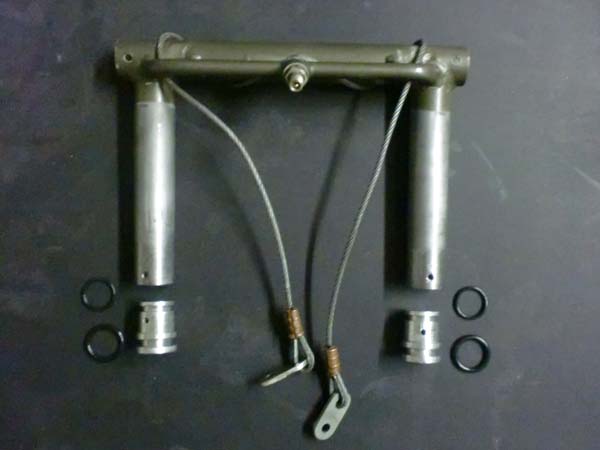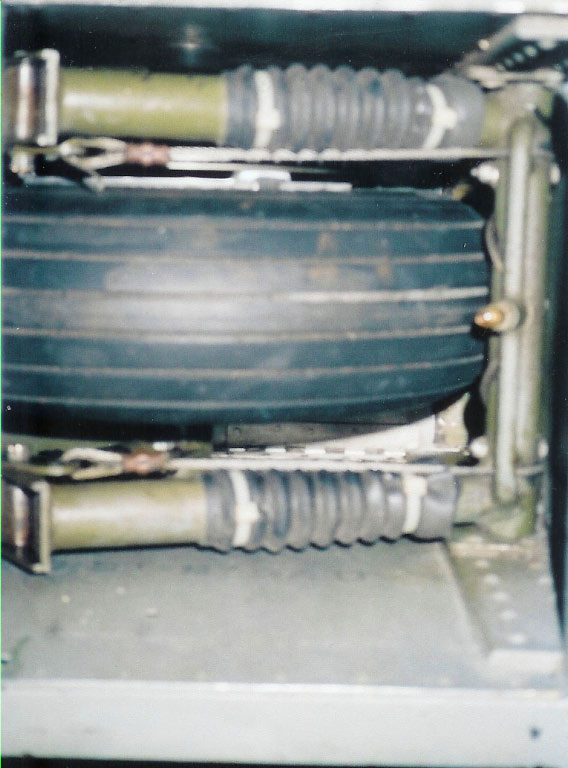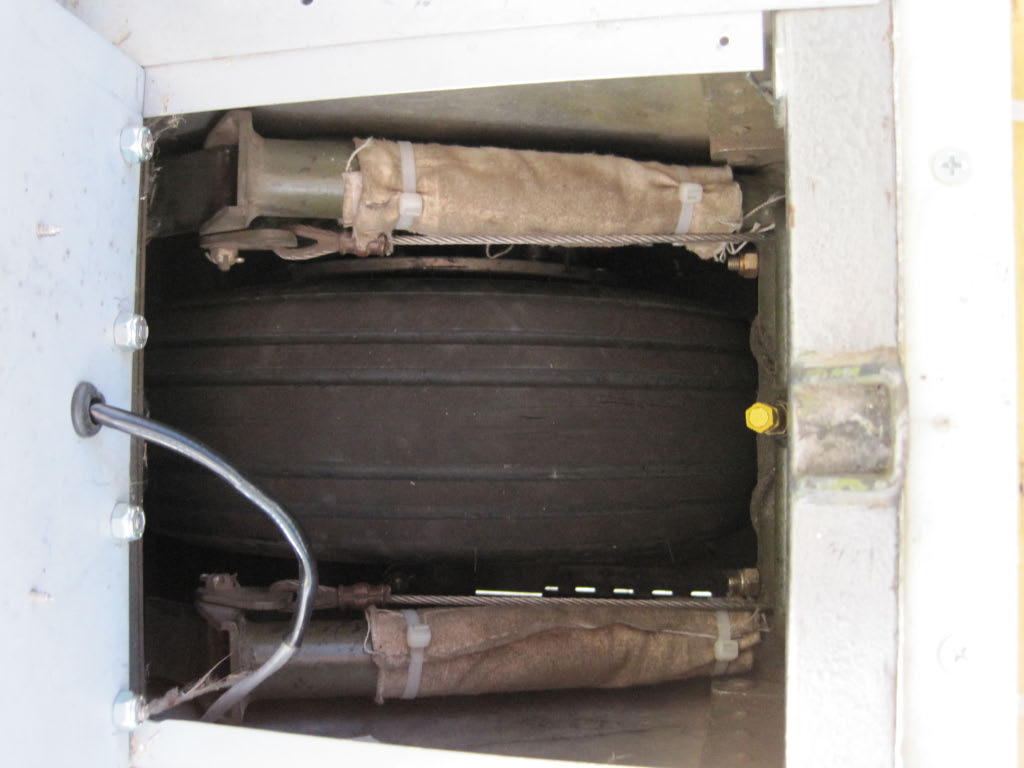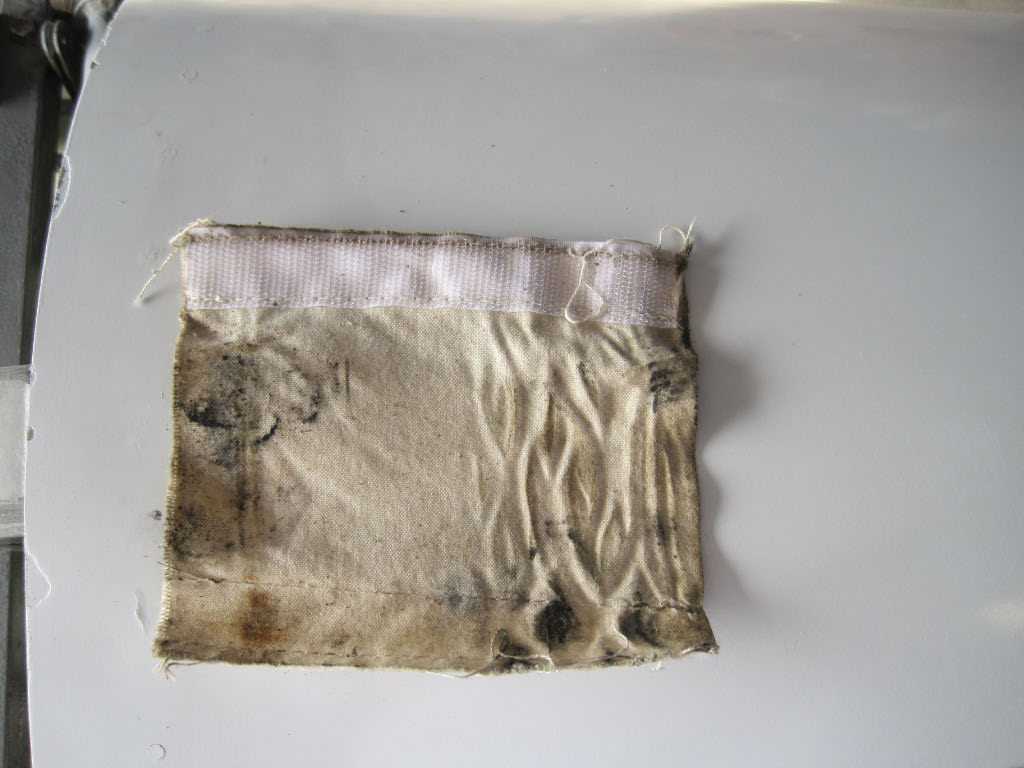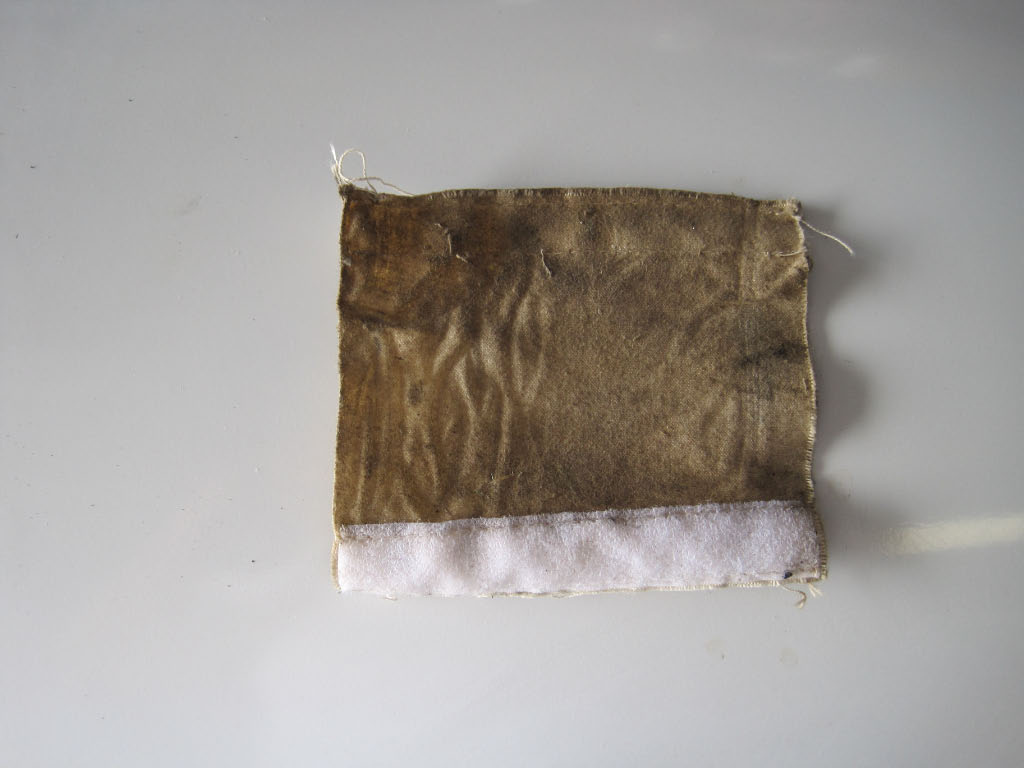The "O" rings used in my strut are 1/8" x 1" od rings, which is a dash 210 O ring. The double seal O rings have part number 90025K331 dash 210. The price from McMaster Carr is $14.50 for 100. Use normal O rings or double seal for the nonmoving seals in the strut, and the double seal for the moving seal.
It should be noted that there are two "O" rings on each strut plug. It is most common that the one that contacts the moving surface is the one that leaks. The other one was installed during construction and usually is good for 20+ years.
This picture was taken by Brad during HP-18 N2281C's strut overhaul. However, all Schreder struts are similar. (If it works, why change.)Bob Kuykendall: It is a bit of a pain to get that pin out, I can so attest. The ends will be peened slightly so that it doesn't move. Just use a pin punch to drive it through its hole, and later replace it with a piece of 1/8" steel or stainless steel rod. It doesn't have to make an airtight seal; the O-rings take care of that. It just has to prevent the piston from moving, and it should be peened and ground down so that it does not drag on the cylinder wall.
5. Coat everything with oil including the "O" rings, reassemble and service. Aircraft hydraulic fluid should be used to service the strut; however, Bruce Patton recommends the use of 10W motorcycle fork oil instead of aircraft hydraulic fluid. It is not hygroscopic and allows the use of compressed air in the struts. His has been solid for almost 4 years. (NOTE: Automobile break fluid will destroy the O-rings!)
6. Re-assemble strut and compress so the pistons are 1/2" from bottoming, and then fill the entire internal volume of the system with the motorcycle strut oil, or 5606 hydraulic oil. Then top up with nitrogen so the struts are fully extended except when heavily loaded. (See "HP-11 & 14 News Letter 4")
7. One of the most common questions asked is "What is the appropriate pressure for the strut?" Well, the answer is around 400 psi. Here is how that is derived: Each strut is 1" in diameter with an area of 0.7854 square inches. There are two struts -- so the total area is 1.5708 sq.in. For a fully extended strut at a gross weight of 640 lbs, the pressure should be 640 divided by 1.5708 which equals 407 psi. Carrying 200 water, which increases the gross weight to 840, will compress the strut. The compressed strut should still have about 2/3 of the travel remaining. If you want the strut fully extended at 800 lbs gross weight, service it to (800 divided by 1.5708) 509 psi. It should be noted that normally it is recommended to pressurize the strut for the landing weight, not the full ballast weight of the glider.
Here are Bob Kuykendall's comments on HP sailplane strut pressure.
Nitrogen Fill system:
Harris Model No. 25-500 C-580 or similar guage.
My Preferred fill valve.Nitrogen fill systems can be purchased from automotive racing equipment, or welding equipment suppliers.
8. Many of us fly in areas were there are concerns relate to possible damage to the system caused by dirt and sand. This can be avoided by placing dust covers on the struts. There are two common approaches.
First is rubber dust covers found on children bike fork suspension systems.
An inspection of this system to ensure the cables have not worn a hold in the rubber should be part of the annual condition inspection.
The other approach is simply to wrap and secure a 4 inch by 5 inch piece of canvas around the strut and secure with either tie-wraps of safety-wire.
The use of commercial grade Velcro allows the wrap to be removed without deflating the strut. This system also needs inspecting to ensure the cables do not cut through the tie-wraps. If that problem accrues it may be wise to switch to securing with safety-wire.
